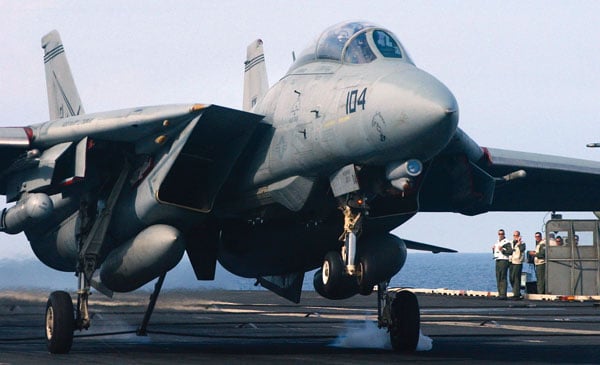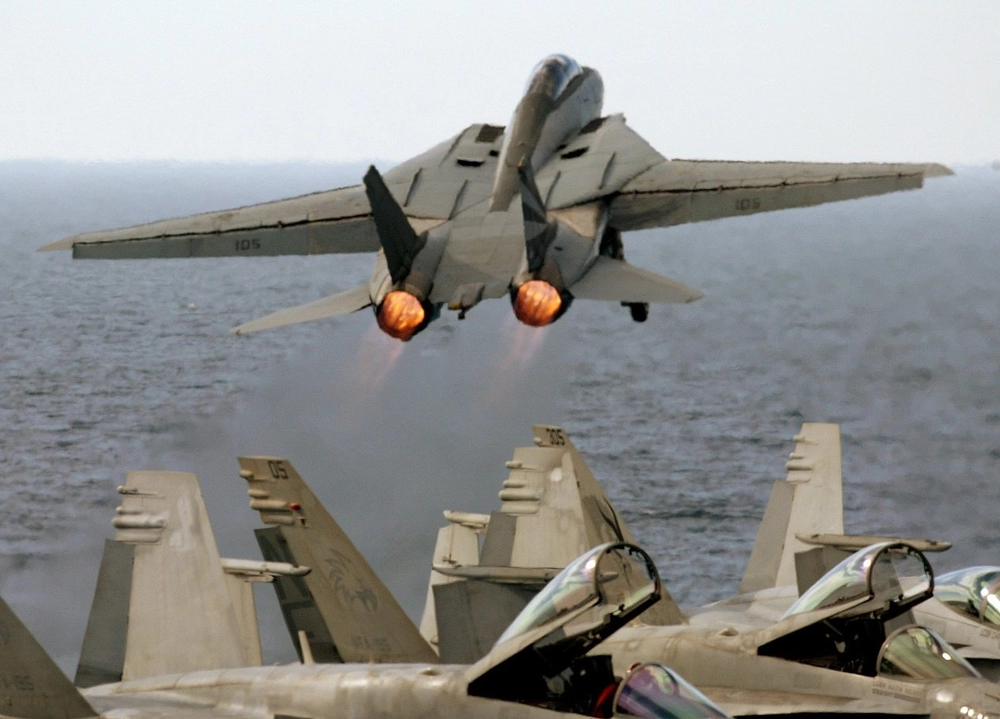The Legacy and Unfulfilled Potential of the F-14 Tomcat
Designed to incorporate the air combat experience learned during the Vietnam War, the Grumman F-14 Tomcat was a trailblazing addition to the American “teen Series” fighter jets, paving the way for aircraft like the F-15 Eagle, F-16 Fighting Falcon, and the F/A-18 Hornet.
Over its three-decade service with the United States Navy, the F-14 Tomcat lived up to its role, earning its reputation in combat and even making an appearance in the iconic film “Top Gun.”
The F-14’s origin dates back to the cancellation of the F-111B, which had been modified but was deemed unsuitable for carrier operations. Subsequently, a new design competition, the VFX program, was initiated, with Grumman emerging as the victor, and the aircraft was aptly named the “Tomcat.”
The F-14 made its maiden flight in 1970, introducing a supersonic, twin-engine, variable-sweep wing, two-seat fighter designed to engage enemy aircraft in all weather conditions, including night operations.
Throughout its service, multiple efforts were made to enhance the F-14, culminating in the F-14D Super Tomcat. The F-14D featured extensive changes to avionics and displays, making it more capable in multi-target engagements.
However, as the world changed and the Cold War ended, the future of the F-14 became uncertain. Defense Secretary Dick Cheney decided not to purchase more F-14Ds, resulting in only a limited number of F-14D Super Tomcats being acquired by the Navy. Eighteen older F-14A models were updated to the D-models, designated as F-14D(R) for refurbishment.
The Super Tomcat 21, an evolution of the F-14, might have breathed new life into the aging fighter, had circumstances been different. This upgrade would have incorporated additional fuel capacity and an active electronically scanned array (AESA) radar developed for the canceled A-12 attack aircraft.
The ST21 was a continuation of a previous proposal by Northrop Grumman called the “Tomcat Quick Strike,” aimed at enhancing existing F-14s with advanced navigation and targeting pods similar to the United States Air Force’s LANTIRN system, as well as upgraded ground attack modes for the F-14D’s APG-71 Radar.
These enhancements could have given the Tomcat true super-maneuverability, sustained speed, and improved acceleration. Along with targeting and navigation pods, the new ST21 would have provided true multi-role fighter capabilities.
According to a former U.S. Navy test pilot, the Super Tomcat 21 had the potential to outperform even the F/A-18 Super Hornet in various aspects, emphasizing its superiority in combat loads. Regrettably, the Super Tomcat 21 never became a reality.
In the end, the F/A-18E/F Super Hornet was chosen to fill the role of fighter/attack aircraft, and the F-14 Tomcat was officially retired on September 22, 2006. Despite its retirement, the F-14 Tomcat remains an iconic aircraft, symbolizing an era of innovation and excellence in American naval aviation.








